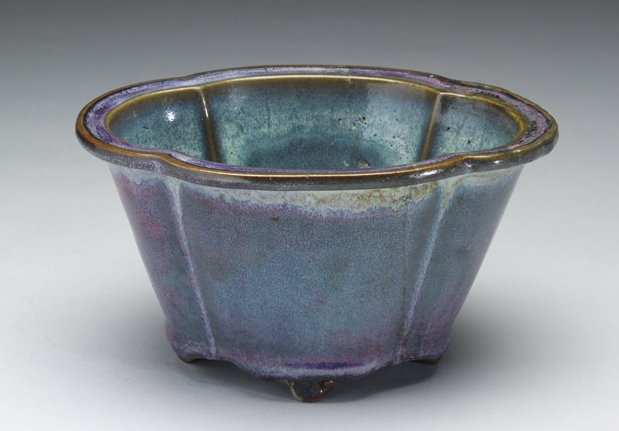Begonia-shaped planter. Jun ware, azure and grape-purple glaze. Ming dynasty, first half of the 15th century
- Image Number: K1B017187N000000000PAB
- Dynasty: Ming dynasty
- Category: Ceramics
- Function: Floral apparatus
- Material: Minerals/Ceramics/
- Description:
Begonia basin and bracket are matched in sets. Folding outward, deep belly, flat bottom, four cloud heads and feet. The bottom edge of the device is prominent, which is the mark of bottom connection. Five round seepage holes are dug. The glaze color is blue with rose purple, and the bottom is coated with brown body protecting glaze, leaving dozens of burn marks. The bottom glaze of the basin is engraved with the word “nine”. The basin holder was originally engraved with the number “one”, and the horizontal inscription of “Chonghua Palace” and the inscription of “Shufang Zhai” on the glaze. Chonghua Palace in the Forbidden City was rebuilt during the reign of Emperor Qianlong of the Qing Dynasty; Shufang Studio was a stage, and later became a place for the royal family to rest and entertain. On the 23rd day of the first month of the 11th year of the reign of Emperor Qianlong of the Qing Dynasty, the Office of the Ministry of Commerce of the Qing Dynasty recorded that: “Eunuchs… handed in two pieces of uniform glaze hexagonal flower pots… on the 26th of this month,… took the uniform glaze pot with a sample of the names of the places pasted on the bottom of the pot… It was ordered that the names of the earth should be engraved horizontally, and the small names should be engraved vertically.”. After the existing palace name

Pictures & Images [HD] download
© Copyright
The copyright of the article belongs to the author, please keep the original link for reprinting.
THE END





